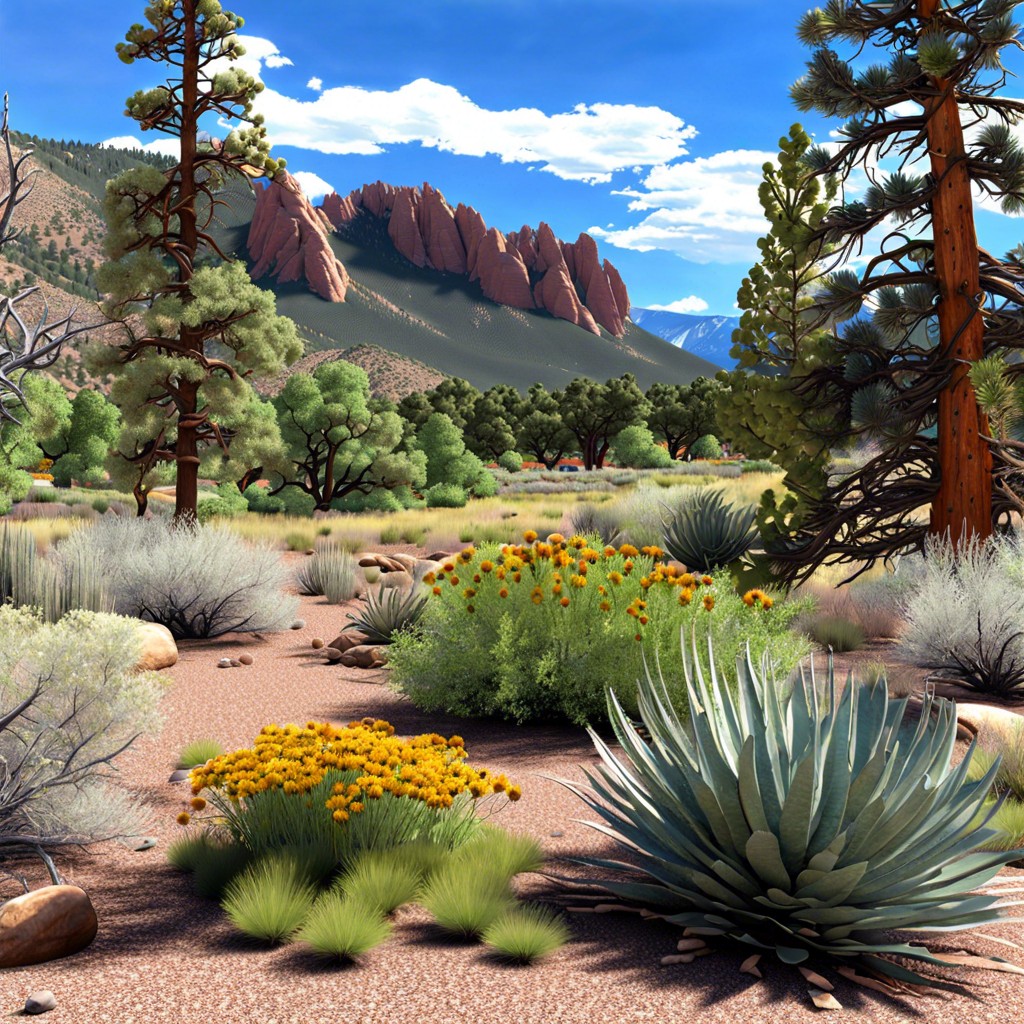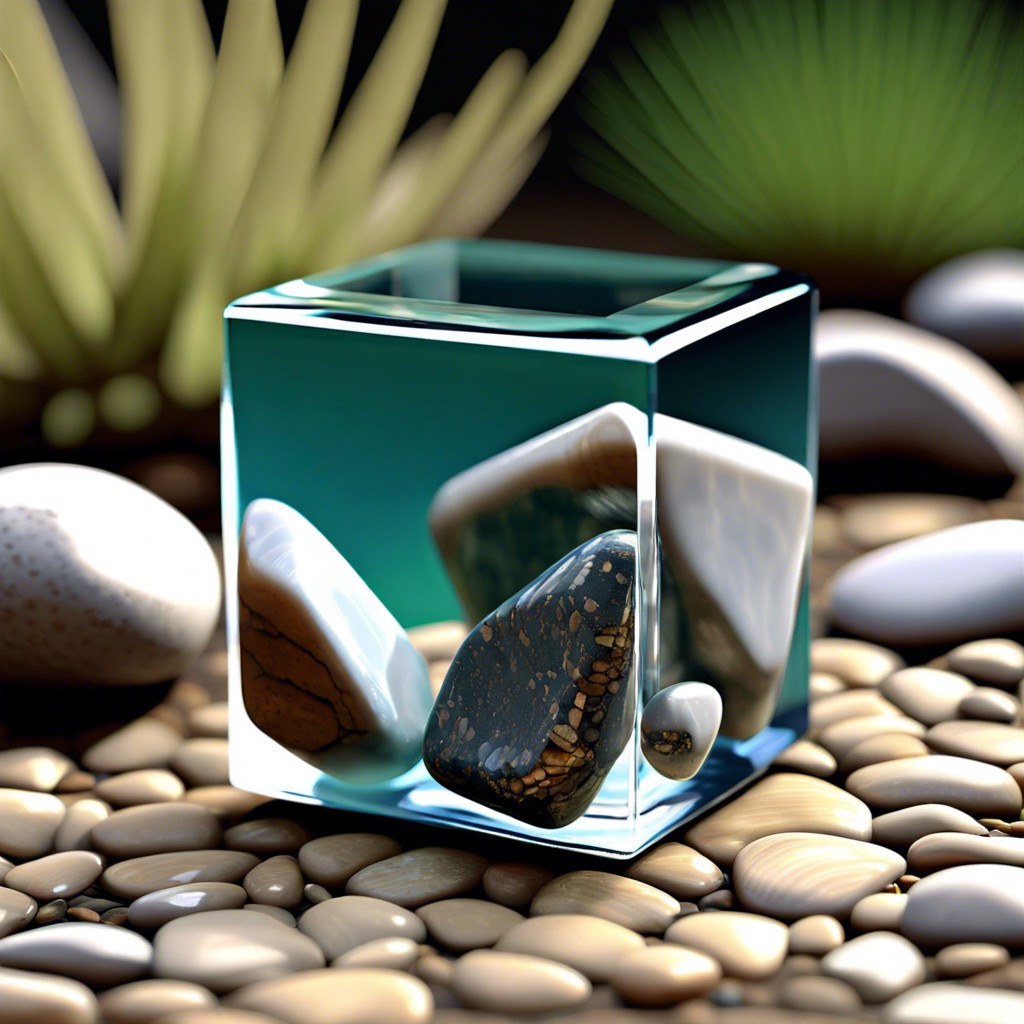Discover how landscaping in Colorado Springs can transform your outdoor space into a vibrant oasis that complements the unique climate and natural beauty of the region.
Key takeaways:
- Landscaping in Colorado Springs embraces the unique climate and native vegetation.
- Popular landscaping styles include rustic charm, English gardens, minimalist designs, and traditional cottage gardens.
- Xeriscaping tips: start with soil, choose drought-tolerant plants, group plants with similar water needs, use mulch, and smart irrigation.
- Sustainable landscaping practices prioritize water-wise choices, mulching, pest control with beneficial insects, and choosing plants according to their preferred locations.
- Best plants and trees for Colorado Springs gardens are Blue Mist Spirea, Russian Sage, evergreens like Pinyon Pine and Colorado Blue Spruce, hardy groundcovers, and Rocky Mountain Penstemon for spring color.
Overview of Colorado Springs’ Climate and Native Vegetation

Tucked high in the Rockies, Colorado Springs enjoys a climate that’s like an old miner—gruff and sometimes unpredictable, but with a heart of gold for growing. The city swings from snowy winters to warm summers, giving plants a real workout. With less rain than a cactus’s daydream, drought-tolerant vegetation is more than just a good idea; it’s a necessity.
Consider the native stars of this high-altitude stage: the blue grama grass that waves like a sea in the prairie wind, or the resilient ponderosa pines that stand tall like sentinels watching over the Garden of the Gods. Not to ignore the scrub oak—these tough little shrubs hunker down and hold onto the soil like a prospector grips his claim.
Now, imagine your garden embracing these hardy natives. You’re not just planting flora; you’re painting your canvas with shades of green that know how to survive a high noon showdown with Mother Nature. So, saddle up partner, because we’re going to garden with the grit of a pioneer and the wisdom of the mountains.
Popular Landscaping Styles in Colorado Springs
In the shadow of Pikes Peak, homeowners take pride in their gardens, often embracing a blend of natural beauty with functional design. One prevalent trend is the blend of rustic charm with modern simplicity. Think native stone walkways paired with drought-resistant plants that merge seamlessly with the local terrain.
Another hit among residents is the English garden style, adapted to the Colorado climate. Picture perennial borders bursting with color against a backdrop of evergreens, providing a year-round visual feast while conserving water.
For those with a contemporary taste, minimalist designs are in vogue. Clean lines and a monochromatic palette emphasize the architecture of the home and the sweeping vistas beyond. Grasses and succulents feature heavily here, requiring little upkeep but delivering maximum impact.
Lastly, the traditional cottage garden, though labor-intensive, still finds its place in the hearts of Colorado Springs gardeners. Overflowing with flowers, herbs, and vegetables, it’s a nod to the bounty of nature and a testament to the dedication of its caretakers. Each style reflects a love for the land and an appreciation of the local environment.
Tips for Xeriscaping in Arid Environments
Ah, Xeriscaping! It’s like giving your garden a survival kit for those dry Colorado Springs summers. Picture this: You’re saving water, your plants are thriving, and you’re not breaking the bank (or your back) to keep your yard looking sharp. Here are a few nuggets of wisdom to make your xeriscaping adventure successful.
First up, start with the soil. This is your garden’s foundation, so give it some love. Amend it with organic matter—it’s like a sponge that holds onto moisture and gives your plants a tasty nutrient buffet.
Next, choose your green buddies wisely. Look for drought-tolerant plants; these are the hardy troopers that won’t keel over when the going gets tough. Native plants often have a home-field advantage here—they’re used to the local hoedown between climate and soil.
Group plants with similar thirst levels together—it’s like setting up a watering zone that makes sure nobody’s drink is empty or overflowing. Plus, it’s a real water saver.
Mulch isn’t just decorative; it’s a moisture-locking, weed-fighting superhero. Spread a layer like a blanket around your plants, and it’ll keep the soil cooler and reduce evaporation faster than you can say “spigot.”
Finally, get smart with irrigation. Drip systems are the secret agents of watering, delivering it directly to the roots where it’s needed most. Some might call it the James Bond of garden gadgetry—subtle, efficient, and oh so clever!
By adhering to these savvy strategies, you’ll have a landscape that not only survives but thrives in the arid dance of Colorado Springs weather. Keep these pointers in your back pocket, and your xeriscaped oasis will be the toast of the neighborhood—cheers to that!
Importance of Sustainable Landscaping Practices
Embracing sustainable landscaping isn’t just a trend; it’s a forward-thinking approach that’s particularly critical in areas like Colorado Springs, where every drop of water matters. By prioritizing eco-friendly practices, we foster a harmony between our outdoor spaces and the natural world.
First off, think water-wise. Opting for drought-resistant plants means your garden can thrive with less water and fuss. Now, that’s a win-win for busy bees who’d rather sip lemonade than lug a watering can around!
Another key point is mulching. It’s like tucking your plants in with a cozy blanket—mulch maintains soil moisture and keeps those weeds at bay, reducing the need for chemical herbicides.
And let’s talk pest control. Ladybugs aren’t just cute; they’re nature’s own pest control squad. By creating a habitat for beneficial insects, you’re saying “no thanks” to harsh insecticides.
Lastly, playing matchmaker with plants and their preferred spots leads to stronger growth. That’s right, location is everything. A shade-lover won’t be too happy in the scalding sun.
Remember, a sustainable yard doesn’t just happen overnight. It grows from a seed of intention, sprouts with planning, and blooms with consistent care. Your patch of earth will thank you — not to mention the chirping birds and the bees doing their happy dance! Keep in mind that every small choice can lead to healthier soil, cleaner air, and a blossoming ecosystem, right in your backyard.
Best Plants and Trees to Use in Colorado Springs Gardens
Given the varying elevations and temperatures of Colorado Springs, choosing the right flora for your garden is crucial. If you want a yard that thrives, pick plants well-suited to the local climate.
First up, perennial favorites like the Blue Mist Spirea and Russian Sage are top-notch choices. These hardy performers deliver a splash of color and are more than capable of standing up to a bit of cold. They’ll keep your garden looking sharp with minimal fuss.
Evergreens are another solid bet, providing year-round greenery. Pinyon Pine, with its resilience and modest size, fits snugly into smaller spaces. For a touch of grandeur, the Colorado Blue Spruce, state tree of Colorado, can bring a stately presence to your landscape.
Don’t forget about hardy groundcovers like Kinnikinnick or Creeping Phlox. They’re low maintenance heroes that carpet the ground with vibrant blooms and leaves, preventing erosion and keeping weeds at bay.
For a pop of spring color, you can’t go wrong with Rocky Mountain Penstemon. It draws in the bees and butterflies, lending your garden a dollop of life and animation.
To wrap it up, plant selection is pivotal for a flourishing Colorado Springs garden. Opt for local and hardy, and you’ll have a patch of paradise that’s both tough and gorgeous.




